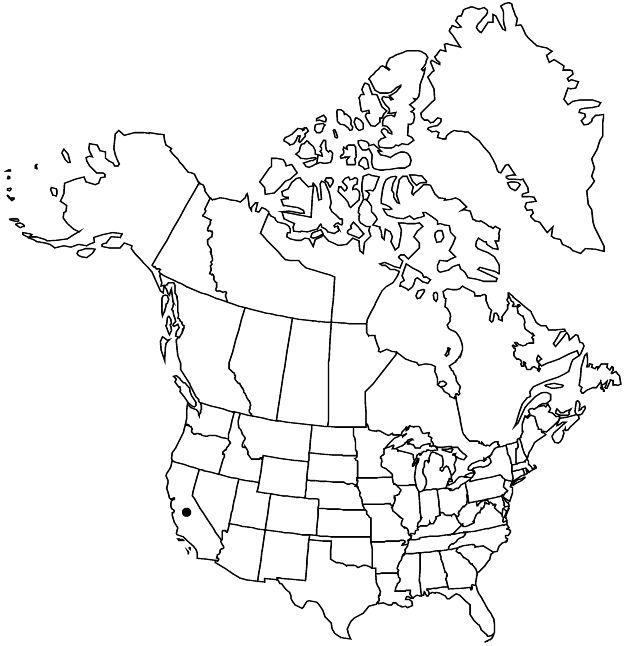Ivesia muirii
Proc. Amer. Acad. Arts 8: 627. 1873.
Plants silvery, usually ± rosetted; taproot stout, sometimes fleshy. Stems usually ± erect, sometimes nearly prostrate, 0.5–1.5 (–2) dm. Basal leaves very tightly cylindric (mousetail-like, with individual leaflets scarcely distinguishable), 2–5 (–10) cm; sheathing base densely strigose abaxially; petiole 0.2–0.8 (–1) cm, hairs 0.5–1.5 mm; leaflets 25–40 per side, 0.4–1 mm, densely sericeous, glands obscured, lobes 2–5, obovate or oval to orbiculate, apex not setose. Cauline leaves (0–) 1–2, paired if 2. Inflorescences 10–30-flowered, 1–2 (–3.5) cm diam.; glomerules usually 1. Pedicels 0.3–2 (–3.5) mm. Flowers 5–6 mm diam.; epicalyx bractlets oblong to obovate, 0.5–1 mm; hypanthium shallowly cupulate, 0.5–1 (–1.5) × 1.5–2.5 mm; sepals (1–) 1.5–2.5 mm, acute; petals yellow, linear to oblanceolate or narrowly oblong, 1–2 mm; stamens 5, filaments 0.3–0.6 mm, anthers yellow, 0.4–0.6 mm; carpels 1–4, styles 0.7–1.2 mm. Achenes grayish brown, mottled with red, 1.6–2 mm.
Phenology: Flowering summer.
Habitat: Dry rocky slopes, fellfields, mostly in alpine conifer woodlands and tundra
Elevation: 2900–4000 m
Discussion
Ivesia muirii is known from alpine areas in the Sierra Nevada. It is one of the more distinctive species of the genus, in its silvery mousetail-like leaves and usually tightly capitate inflorescences. Putative hybrids are known with I. lycopodioides (D. D. Keck 1938) and I. pygmaea (Center Basin area of Tulare County).
Selected References
None.
Lower Taxa
"thin" is not a number."dm" is not declared as a valid unit of measurement for this property."dm" is not declared as a valid unit of measurement for this property."dm" is not declared as a valid unit of measurement for this property.
